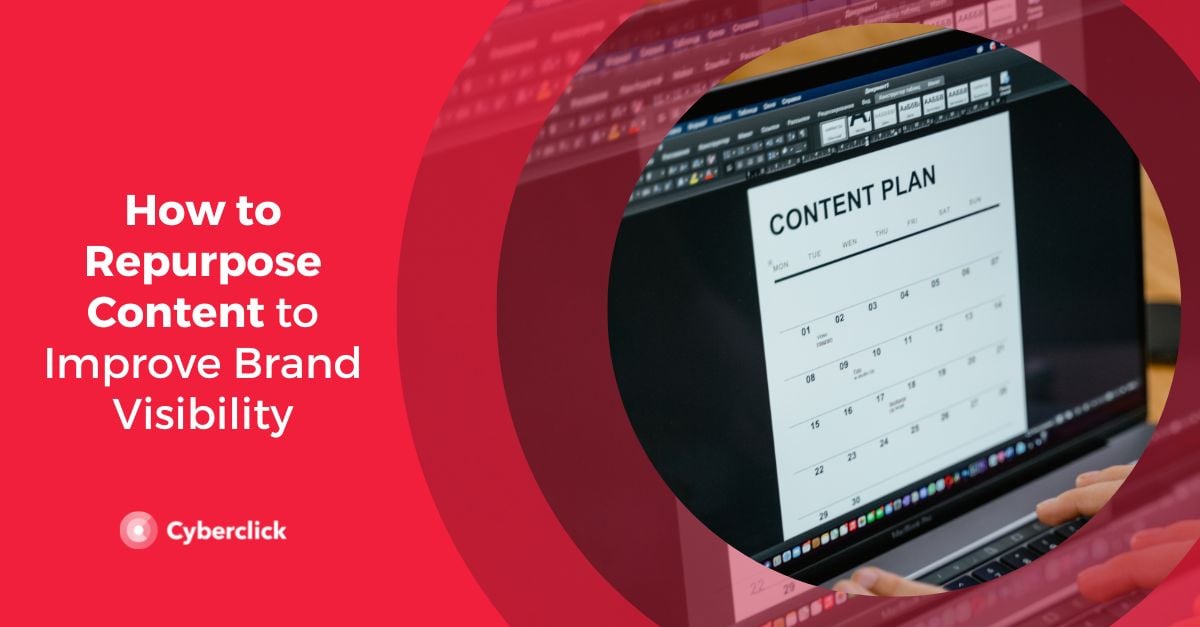Most companies today are aware that creating and sharing a constant stream of content related to their brand is a must for visibility and outreach in order to let the world know about their company and the products or services they offer.
But even the best marketing strategy will burn out like a candle if it doesn’t account for how difficult it is to create interesting, original, and relevant content. Constantly churning out new content is not only exhausting; it disregards the potential to repurpose the content you already have for different channels and formats.
Learn how to repurpose content and how it will help take your brand visibility to the next level.

What Does It Mean to Repurpose Content?
To repurpose content means to recycle previously created content, usually by modifying its format for different platforms or channels.
Rather than maintaining a constant stream of average content, businesses can make the most out of their marketing efforts by producing fewer, higher quality, content pieces and making sure they reach the largest possible number of potential customers in the exact format and tone that they are most likely to resonate with.
Benefits of Repurposing Content
The main benefit of repurposing content is that it drastically decreases the amount of time needed to create new content. Repurposing content, even if it entails tweaking the format or specs a bit, will take less time than creating something from scratch every time. Doing so is also a great way to reduce the risk of creative burnout or falling into the trap that quantity is better than quality.
Using the same piece of content for different social media channels is only the start, though: while posts can be graphically adapted to each channel, and even transformed into video, your separate units of content can also be combined to create larger pieces of content, like ebooks, webinars, and testimonials.
Another benefit of repurposing content is that, no matter what your target audience is, you will probably have different audiences across different channels. Facebook, generally speaking, is used a lot more among adults, whereas Twitter, Instagram, and especially TikTok, have a much younger target demographic. By resharing content on these platforms, you can double the impressions, interactions, and reach of your high-quality content with little to no effort.
Repurposing content also ensures you have covered all your bases. Luck plays a huge role in online algorithms, especially on the most popular social media apps, and even the best content can get modest results on a bad day. Moreover, with the constant stream of content posted on the internet, content can lose its shine in a matter of hours and quickly be forgotten. Repurposing content ensures different audiences can enjoy your posts with fresh eyes.
Moreover, repurposing content improves organic visibility and boosts SEO, which still accounts for a large chunk of site traffic. Having a greater variety of highly relevant content opens the door for more targeted traffic, and, if published on different sites or channels, even backlinks.
How to Choose What Content to Repurpose
An obvious indicator of content that is perfect for repurposing is considering whether it’s evergreen content. This is content that is useful through the years, and that audiences consistently keep searching for. Evergreen content is the opposite of time-sensitive content that only stays relevant for a short amount of time and then stops being useful (like, for example, a post on this month’s hottest video game releases). Evergreen content requires frequent updates to stay current and relevant.
Another indicator of content that can be repurposed is if posts have performed well in the past. A high level of interest means audiences will keep coming back to it.
4 Examples of Ways to Repurpose Content
1. Turn a Research Report Into a Blog Post
Companies do a lot of research into what their customers are doing, or are interested in doing, with their product, platform, or services. This research can be used to guide your product strategy but also for creating content. Ask yourself: What internal information could your audience benefit from and appreciate?
2. Create Infographics From Long-Form Content
Not everyone has the patience to read long blog posts or listen to podcast episodes. Taking the gist of your message and transforming it into graphic insights that can be easily digested will hook even the most fleeting attention spans.
3. Gather Blog Posts for an Ebook or Online Course
If you’ve been creating blog content for a while, especially if your posts ladder back up to an overall content pillar or topic, you can package them together in the form of an ebook and offer it to users for free in exchange for signing up to your newsletter.
Online courses are also on the rise– transforming content into a video format, complete with questions and exercises, does not require nearly as much effort as it sounds like it does. Doing so will attract audiences interested in acquiring practical skills and knowledge related to your field.
4. Turn Testimonials Into Social Media Content or Podcast Interviews
If you have good client testimonials, share them on your social platforms so your potential audiences realize the value your company provides!
Responsable de la estrategia de contenidos y visibilidad en Cyberclick, con enfoque Allbound y especialización en posicionamiento SEO, GEO y automatización con IA. Gestión avanzada del CRM con HubSpot: base de datos, workflows, lead nurturing, scoring y reporting. Experiencia en marketing digital, comunicación corporativa y periodismo, uniendo estrategia, creatividad y tecnología para captar y convertir leads cualificados.
Responsible for content and brand visibility strategy at Cyberclick, with an Allbound approach and specialization in SEO, GEO (Generative Engine Optimization), and AI-powered automation. Advanced HubSpot CRM management: database segmentation, workflows, lead nurturing, scoring, and reporting. Background in digital marketing, corporate communications, and journalism—combining strategy, creativity, and technology to attract and convert qualified leads.






Leave your comment and join the conversation